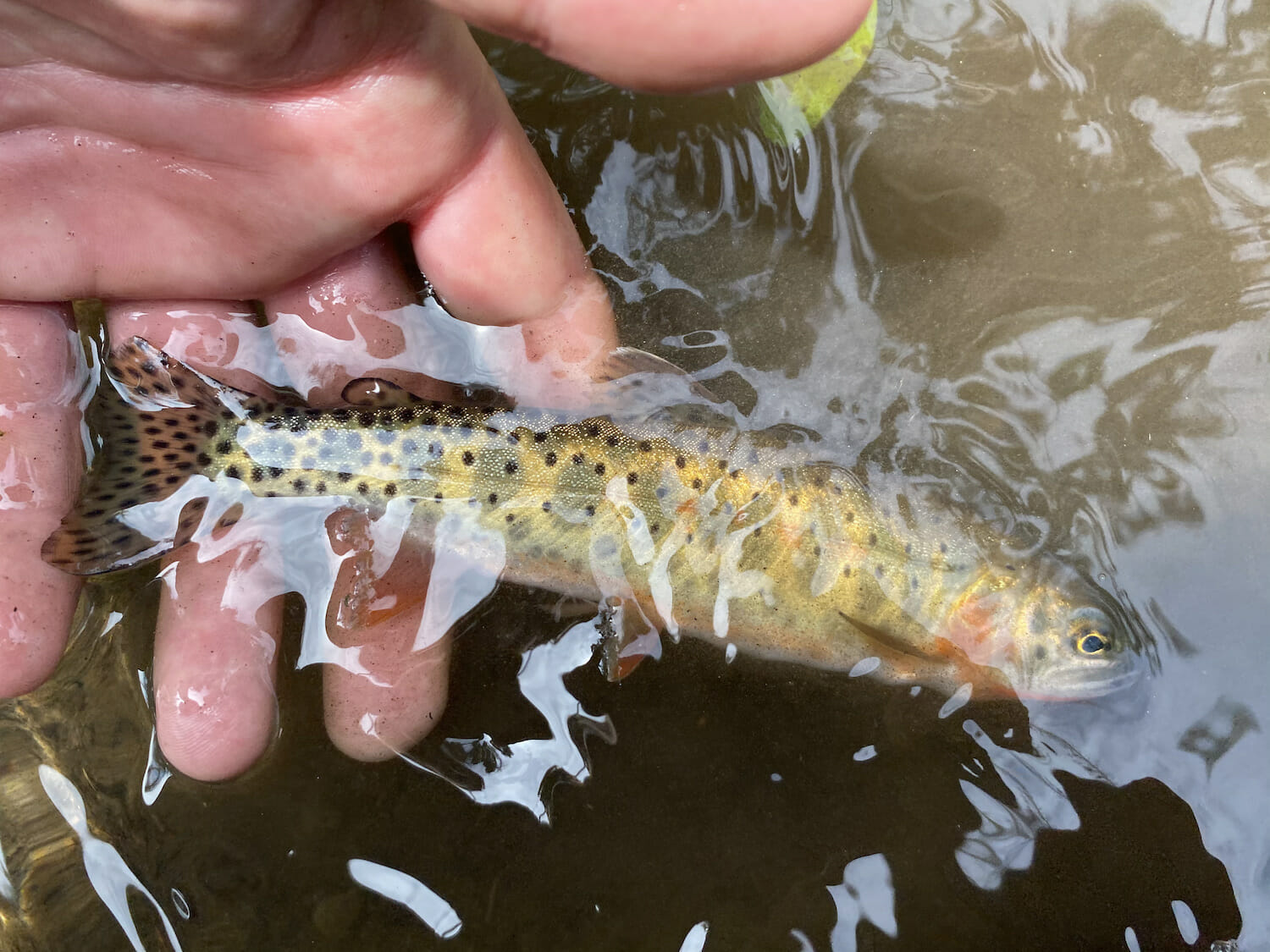Rio Grande cutthroat trout (Oncorhynchus clarkii virginalis)
Species status and summary: Rio Grande cutthroat trout (RGCT) were first discovered in 1541 by Francisco Coronado’s expedition in the upper Pecos River, although they were not formally described until 1856. They represent the southern extent of the cutthroat trout species, historically ranging from the mountainous headwaters of the Rio Grande, Pecos and Canadian rivers in Colorado and New Mexico to small streams in the Guadalupe and Davis Mountains of Texas. Today 121 populations of Rio Grande cutthroat trout occupy less than 10 percent (about 680 miles) of their historical stream habitat in Colorado and New Mexico and they have long since been extirpated from west Texas. Remaining populations primarily occur in small high elevation tributaries, disconnected from the larger rivers they once occupied. Fragmentation of habitat from man made structures such as diversions, dams and culverts and a management strategy of isolation above barriers for protection from non-native species have separated historically migratory populations of Rio Grande cutthroat trout from their feeding and growing habitats in larger rivers. Although 75 percent of Rio Grande cutthroat trout populations are genetically pure, none of the populations support a migratory life history. The average extent of occupied stream habitat is less than 6 miles, leaving them highly vulnerable to environmental disturbances such as wildfire and drought
Currently living in only about 100 headwater streams, Rio Grande cutthroats have a yellowish green-gray to gray body with scattered black spots, and a densely spotted tail. Adults grow up to 12-13 inches long.
The Rio Grande Cutthroat has officially been designated as the New Mexico State Fish.
Looking Forward: Habitat degradation, hybridization, and competition with nonnative trout are the primary threats to the security of RGCT populations. Other concerns include lack of connectivity to maintain genetic diversity, potential for angler overharvest, impacts of whirling disease, and catastrophic threats such as drought and forest fire.
Stocking of nonnative salmonids was widespread since before 1900, and has been considered a primary threat to inland native cutthroat subspecies. Brook trout are known to replace most subspecies of inland cutthroat trout when in sympatry. Rainbow trout and other nonnative cutthroat trout subspecies hybridize with Rio Grandes and produce fertile offspring. In New Mexico, only infertile triploid rainbow trout are stocked by the Department of Game and Fish to prevent hybridization with Rios. The competition from nonnative trout means pure Rio Grande cutthroat populations require protection by natural or artificial migration barriers. Construction, monitoring, and maintenance of such barriers are management priorities for all relevant agencies. Illegal stocking of non-native trout into Rio populations and movement of fish by anglers also is a concern.
A conservation team established in 2003, composed of Colorado Parks and Wildlife, New Mexico Dept. of Game and Fish, U.S. Fish and Wildlife Service, U.S. Forest Service, Bureau of Land Management, the National Park Service, the Jicarilla-Apache Nation, the Mescalero-Apache Nation, and the Taos Pueblo tribe and conservation organizations such as the Western Native Trout Initiative and Trout Unlimited collaborated to work on rangewide protection plans and completed numerous conservation projects for the species. An updated conservation agreement and 10-year plan to protect the Rio Grande cutthroat trout was signed in 2013 with the goal of assuring the longterm viability of Rios throughout their historic range and setting a conservation strategy for the future.
Between 2007 and 2020, the Western Native Trout Initiative has provided $692,945 in funding to 24 projects to benefit Rio Grande cutthroat trout. Projects have ranged from barrier construction/restoration to keep non-native trout out of conservation waters, habitat restoration, genetics analysis, and public outreach and education.
All data compiled from:
Western Native Trout Initiative



